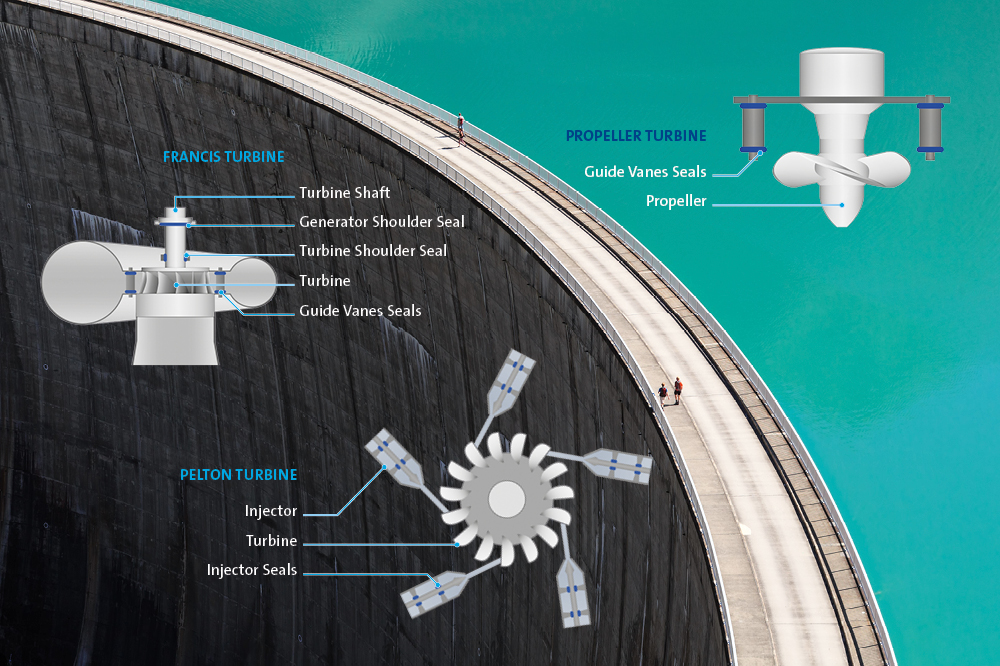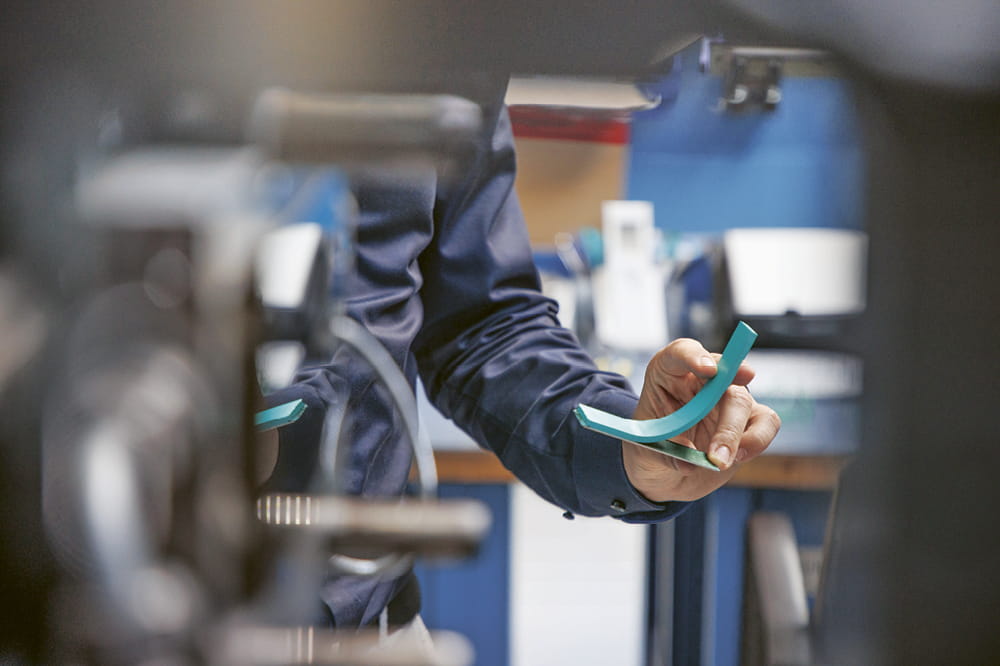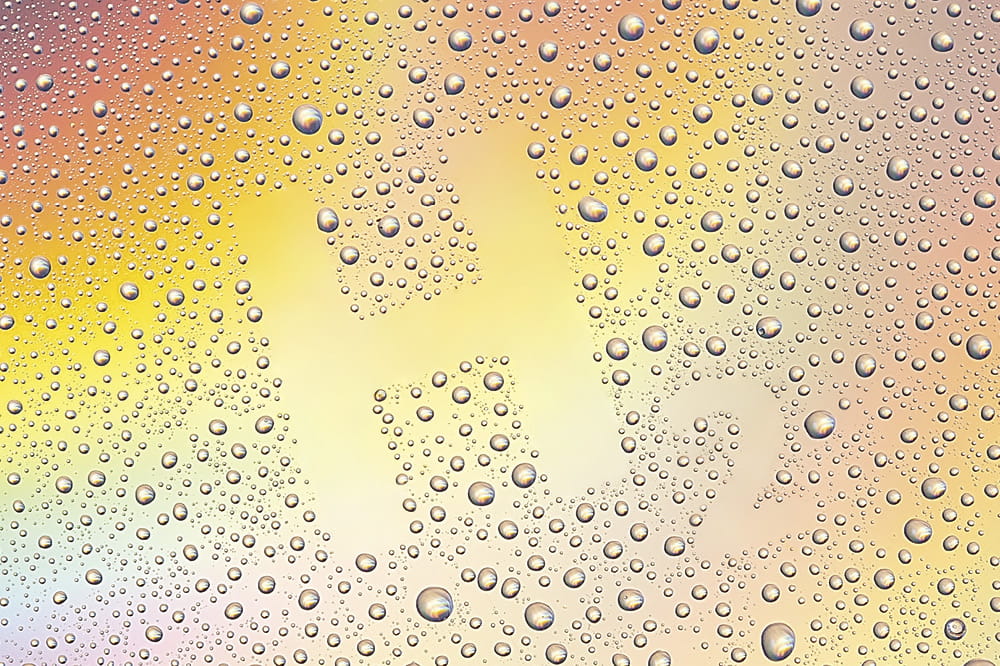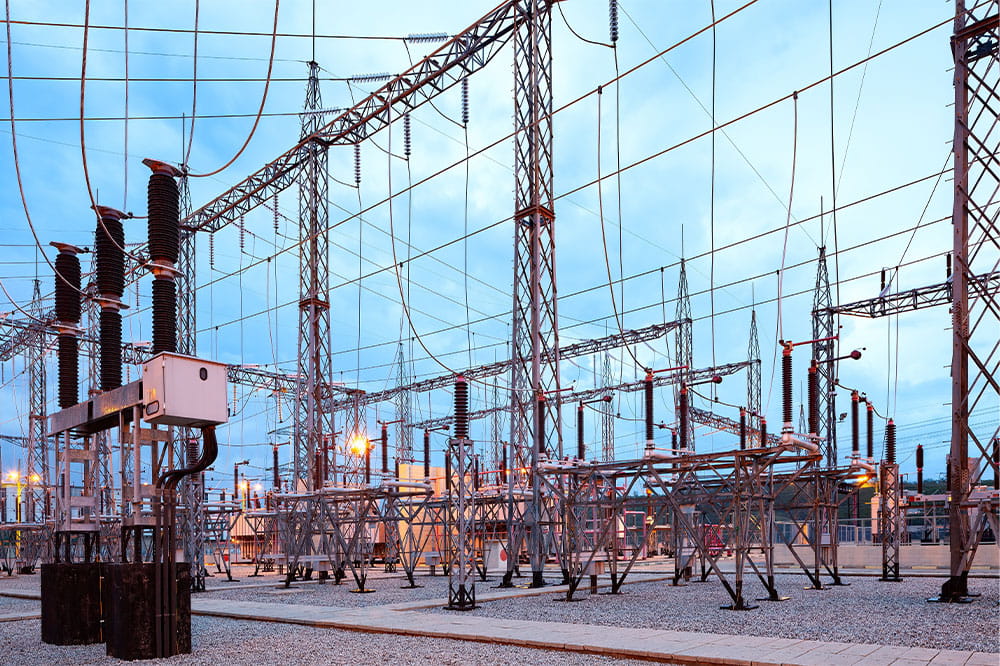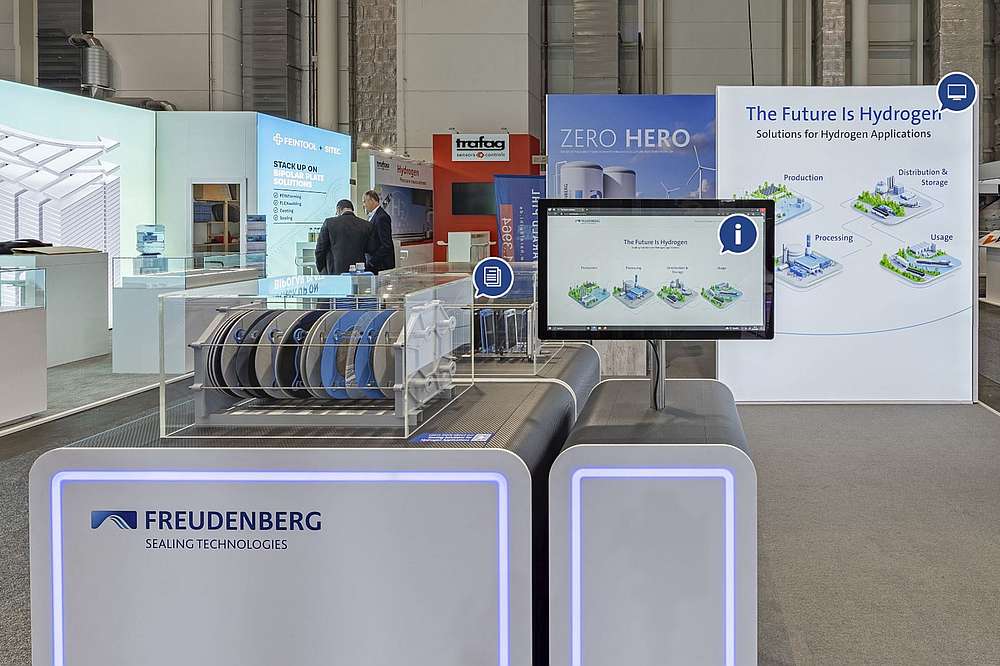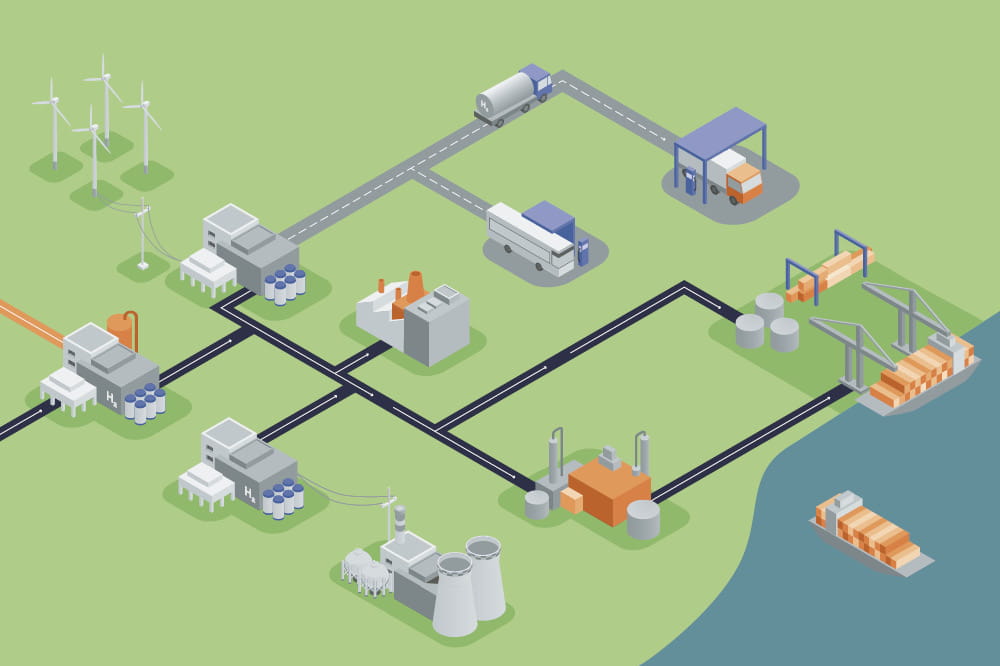Obtain news and background information about sealing technology, get in touch with innovative products – subscribe to the free e-mail newsletter.

17.05.2022 | Story
“Disruptions Are a Dream for Experts”
The road to sustainability includes higher energy efficiency and lower CO2 emissions. How will Freudenberg Sealing Technologies achieve these objectives at its global manufacturing sites? And how will the company’s material expertise support sustainability efforts? Dr. Matthias Sckuhr, COO of Freudenberg Sealing Technologies, talks about lean processes, historic trends and the role of employees.
Dr. Sckuhr, how can entrepreneurship and sustainability be combined?
Dr. Matthias Sckuhr: This is not something we need to manage. Entrepreneurship and responsibility are intrinsically connected to one another. This is especially true when it comes to responsibility for the future of society, that is, for environmental protection, health and work standards. It is undeniable that the climate is changing and the environment is threatened. The logical response for us as entrepreneurs is to think sustainably.
Has this always been the case?
The sustainability of products and processes has always been a responsibility that Freudenberg has lived and breathed. Yes, entrepreneurs have to think long-term, and that means thinking about sustainability. Otherwise they won’t survive. If they don’t address sustainability, they won’t survive.
We need to think ‘lean,’ which means getting every form of waste out of our processes.
But what steps can we take to conserve resources and energy?
At the outset, there are always questions: Where do we stand? How much are we consuming? What industrial process accounts for this consumption? At Freudenberg, we want to tackle this holistically. That’s why we have firmly anchored energy savings in our culture and our continuous-improvement programs. We call the initiative GROWTTH: “Get Rid of Waste Through Team Harmony.” It includes ongoing training of our employees around the world. We have to think lean. That means removing every type of waste from our processes. We also need reliable figures, data and facts so we can measure our real progress. As part of this effort, we are introducing a global energy consumption measurement system that will ensure that all sites have the same key figures available and that we achieve maximum transparency.
Energy efficiency is not an end in itself.
Of course not. We need energy to manufacture our products. That is the very reason we, as a company, have always tried to make our processes as energy-efficient as possible. At Freudenberg Sealing Technologies, we are in a good position. We have already converted 85 percent of the energy we need into electricity. The only open question is how quickly political leaders and energy producers actually make sustainable electricity available to us. Basically, we have nearly stopped using fossil fuels. At most, we are using natural gas for heating.
You are hoping to cut emissions by 30 percent by 2025 compared to 2020 as expressed in tons of CO2 per million euros of revenue. How is that going?
First of all, it is important to clarify which CO2 emissions we are talking about. CO2 occurs along the entire value chain. We are considering Scope 1 and 2. That means direct emissions from our own activities and the indirect emissions from the electricity or heat that we purchase. Scope 3 would relate to steel that we purchase, for example. We naturally want to reduce CO2 along the entire chain. If we buy “green” steel, that is an important reduction of our footprint. But it doesn’t flow into our internal calculation. And we are not just looking at our footprint. We are considering what we call our handprint as well: What effects do our products have on our customers? When we provide our customers with low-friction seals, for example, we reduce their resource consumption.
Where does Freudenberg Sealing Technologies currently stand?
Like many companies in 2020, we emitted fewer tons of CO2 due to the lower sales and production demand the pandemic created. That was welcome news, even if it was predictable. But in 2021, we again managed to emit fewer tons of carbon dioxide per million euros of revenue. So the trend is heading in the right direction.
Does material expertise help to decrease emissions as part of these efforts?
Yes. Processes can be improved when changes are made to materials. Take post-curing for example. A large share of our seals still have to be cured in an oven after molding. That takes energy. During the last few years, we have developed new materials that do not require post-curing. That saves energy.
Is process optimization at the heart of energy conservation?
Process optimization has always been a driver – at least for engineers. It was more of a financial incentive in the past. Today, it also includes looking at the environment. In any event, an end-product that requires fewer resources is a good thing. Recycling also makes sense, and our material scientists think about all of these issues. Frankly, this is an ideal time for engineers, technicians and scientists. They can do creative, scientific and innovative work during this environmental disruption. For experts, it is a dream come true.
Entrepreneurship and responsibility belong together. Especially responsibility for the future of society.
But financial incentives continue to be important.
Of course, they do. For example, CO2 effects are taken into account when investment proposals are considered. Suppose a machine is somewhat more expensive to buy, but is more energy-efficient. That becomes part of the calculation. We want to make it easier for our departments to invest in machines of this kind.
How can employees be persuaded to think and act more sustainably?
I don’t know if we really still need to persuade employees. The issue is so prevalent, so emotional, and so cross-generational. We are receiving a lot of proposals and ideas. I am convinced that most of our employees have already internalized this: They want the next generation to inherit a world that is livable. That is a worthwhile goal and I can only encourage everyone to make a contribution. After all, we don’t have forever to do it.
Looking back over your career, are there instances where planning for the future did not go far enough?
Actually, I often ask myself this question. At one point or another, you could always have taken a different approach. But not much really comes to my mind with regard to sustainability because conserving resources has always been a sensible goal. There is something else that can be assessed critically in retrospect, however: long supply chains. In the past, it was nearly impossible to have an impact on long supply chains. Now I believe things are going to tighten up. We would like to avoid deliveries over thousands of miles/ kilometers whenever possible.
So does sustainability ultimately mean challenging yourself again and again?
Yes, because, over the course of time, we keep discovering new opportunities. We are talking about continuous improvement, a concept that is firmly anchored at Freudenberg Sealing Technologies.
More news on the subject Sustainability

Join Us!
Experience Freudenberg Sealing Technologies, its products and service offerings in text and videos, network with colleagues and stakeholders, and make valuable business contacts.
Connect on LinkedIn! open_in_new

